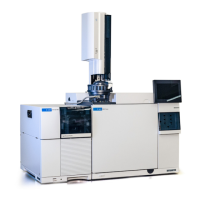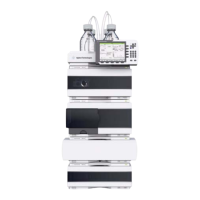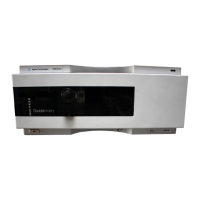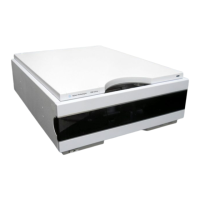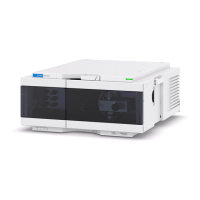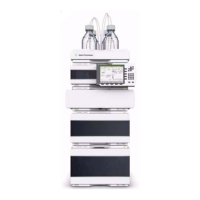6 General Maintenance
Before Starting
144 5977C GC/MSD Operating Manual
install a hose to take the exhaust from the foreline pump outdoors or into a fume
hood vented to the outdoors. For the standard foreline pump, this requires
removing the oil trap. Be sure to comply with your local air quality regulations.
The fluids in the diffusion pump and standard foreline pump also collect traces
of the samples being analyzed. All used pump fluid should be considered
hazardous and handled accordingly. Dispose of used fluid correctly, as specified
by your local regulations.
Ion source cleaning
The main effect of operating the MSD in CI mode is the need for more frequent
ion source cleaning. In CI operation, the ion source chamber is subject to more
rapid contamination than in EI operation because of the higher source pressures
required for CI.
Electrostatic discharge
All of the printed circuit boards in the MSD contain components that can be
damaged by electrostatic discharge (ESD). Do not handle or touch these boards
unless absolutely necessary. In addition, wires, contacts, and cables can conduct
ESD to the electronics boards to which they are connected. This is especially true
of the mass filter (quadrupole) contact wires which can carry ESD to sensitive
components on the side board. ESD damage may not cause immediate failure,
but it will gradually degrade the performance and stability of your MSD.
The oil trap supplied with the standard foreline pump stops only foreline pump
oil. It does not trap or filter out toxic chemicals. If you are using toxic solvents
or analyzing toxic chemicals, remove the oil trap. Do not use the trap if you
have a CI MSD. Install a hose to take the foreline pump exhaust outside or to a
fume hood.
When replacing pump fluid, use appropriate chemical-resistant gloves and
safety glasses. Avoid all contact with the fluid.
Always perform any maintenance procedures using hazardous solvents under
a fume hood. Be sure to operate the MSD in a well-ventilated room.

